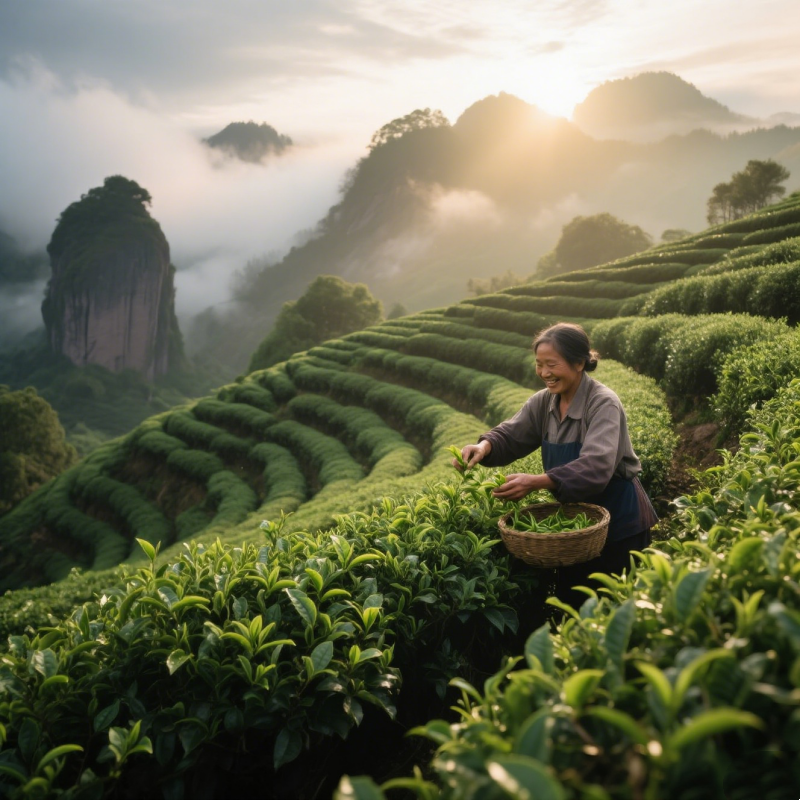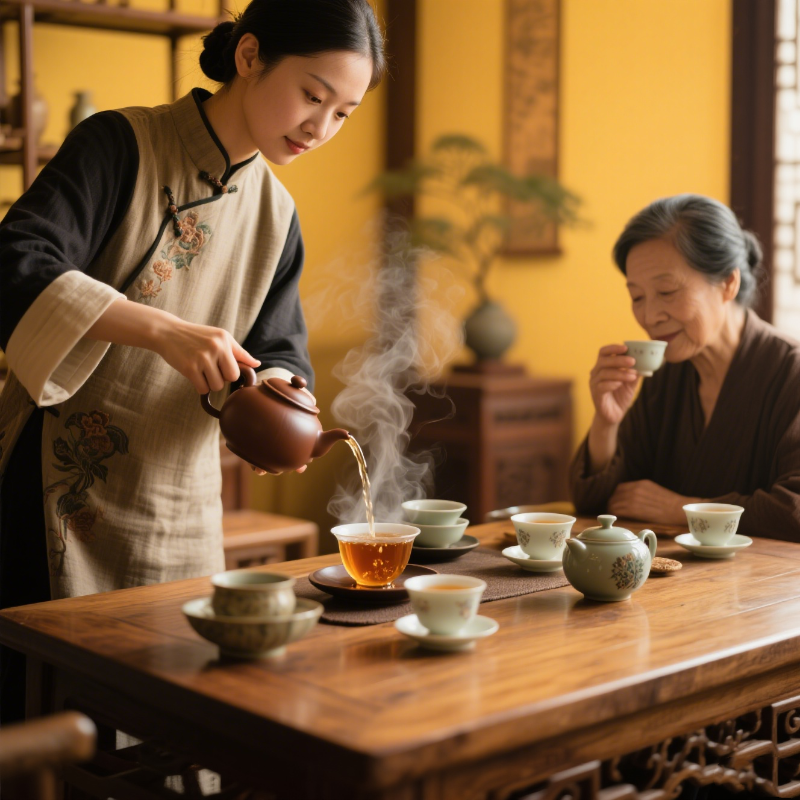Nestled in the mist-cloaked mountains of Fujian Province, China—widely regarded as the birthplace of oolong—the art of crafting this aromatic beverage has been perfected over centuries. The aroma of oolong tea is a symphony of floral, fruity, and earthy notes, captivating tea enthusiasts worldwide. In this article, we delve into the science, history, and craftsmanship behind this iconic brew, exploring how its unique aroma is cultivated and celebrated.

1. The Aroma Profile of Oolong Tea
The aroma of oolong tea is its most defining characteristic, varying widely depending on the cultivar, growing region, and processing techniques. Unlike black or green tea, oolong undergoes partial oxidation, a process that unlocks its complex fragrance. For instance, the Wuyi Mountain oolong variety known as Da Hong Pao (Big Red Robe) boasts a deep, roasted aroma with hints of caramel and stone fruit. In contrast, Anxi Tieguanyin (Iron Goddess of Mercy) offers a lighter, orchid-like scent with a refreshing finish.
Scientists have identified over 700 volatile compounds in oolong, including terpenes, esters, and aldehydes, which contribute to its rich olfactory experience. These compounds are released during oxidation and firing, creating a sensory journey that starts with a delicate bouquet and evolves into a robust, lingering aroma. To truly appreciate this complexity, sipping a high-quality oolong brew from a small porcelain cup allows the aroma to unfold gradually, engaging both the taste buds and the nose.
2. How Terroir Shapes the Aroma of Oolong Tea
The concept of terroir—the unique combination of soil, climate, and geography—plays a pivotal role in shaping the aroma of oolong tea. Fujian’s subtropical climate, with its mild winters and abundant rainfall, provides ideal conditions for tea plants to thrive. The region’s red clay soil, rich in minerals like iron and potassium, imparts distinct earthy undertones to the leaves.
Take the famous Yancha (Rock Tea) from Wuyi Mountain, for example. Grown in crevices and rocky outcrops, the tea absorbs minerals from the surrounding rocks, resulting in a mineral-rich aroma with a subtle smokiness. Similarly, the high-altitude tea gardens in Taiwan’s Alishan region produce oolongs with a crisp, floral scent, influenced by the cool mountain air and misty mornings. The interplay between nature and nurture here is evident in every sip, making oolong tea a true reflection of its origin.
3. Brewing Techniques to Enhance the Aroma of Oolong Tea
To fully unlock the aroma of oolong tea, proper brewing is essential. Unlike other teas, oolong requires precise water temperature and steeping time. For most varieties, water heated to 195–205°F (90–96°C) is ideal, as boiling water can scorch the leaves and dull the aroma. A shorter steep time of 1–2 minutes per infusion allows the delicate flavors to emerge without bitterness.
Many tea connoisseurs prefer the gongfu cha (kung fu tea) method, which uses a small clay pot and multiple short infusions. This technique not only preserves the tea’s aroma but also reveals its layered complexity over successive brews. Pairing oolong tea with the right vessel—such as a Yixing teapot, known for its porous clay that absorbs and enhances the tea’s essence—further elevates the experience. By mastering these techniques, even a simple cup of oolong becomes a sensory masterpiece.

4. The Cultural Significance of Oolong Tea’s Aroma
Beyond its sensory appeal, the aroma of oolong tea holds deep cultural significance in China and Taiwan. In Fujian, tea ceremonies are not just about drinking tea but about appreciating the artistry and craftsmanship behind it. The act of smelling the tea leaves before brewing, known as wen xiang, is a ritual that connects the drinker to the tea’s origin and the hands that harvested it.
Oolong’s aroma has also inspired poets and artists throughout history. In traditional Chinese poetry, the fragrance of oolong is often compared to the scent of orchids or the misty mountains where it grows. This cultural reverence has spread globally, with oolong varieties now celebrated in international tea competitions and gourmet circles. Its aroma is a bridge between ancient traditions and modern lifestyles, appealing to both casual drinkers and serious collectors.
The Health Benefits of Oolong Tea’s Aroma
While the aroma of oolong tea is primarily enjoyed for its sensory pleasure, it also offers surprising health benefits. Research by the FDA suggests that the polyphenols in oolong may support heart health and aid in weight management. Additionally, the act of inhaling the tea’s aroma has been linked to stress reduction and improved mood, making it a holistic wellness ritual. For those looking to explore these benefits, incorporating a daily cup of oolong brew into their routine can be a simple yet impactful step.
As you sip your next cup of oolong, take a moment to appreciate the journey it has undergone—from the misty mountains of Fujian to your teacup. The aroma of oolong tea is not just a scent; it’s a story of tradition, nature, and craftsmanship. To experience this magic firsthand, visit Yihe Teas to explore their premium oolong selections, carefully curated to showcase the full spectrum of this tea’s aromatic wonders.
